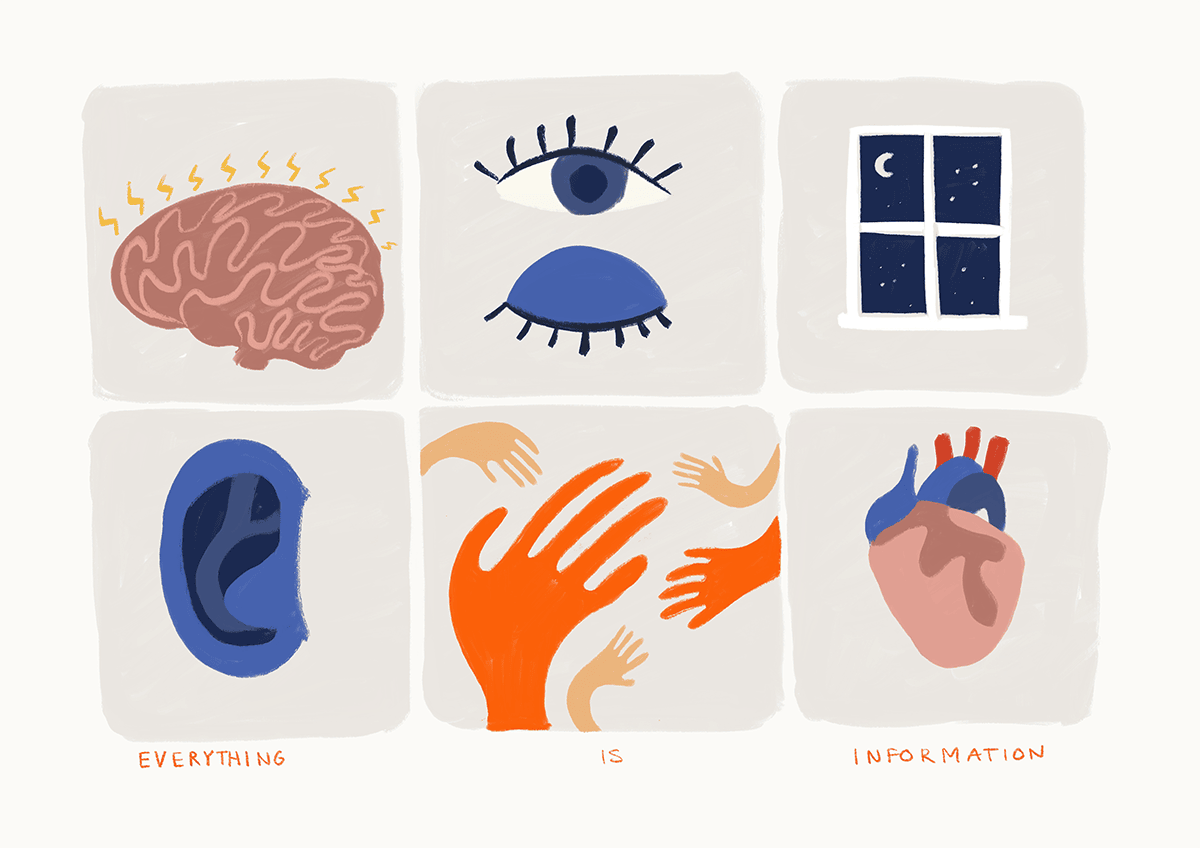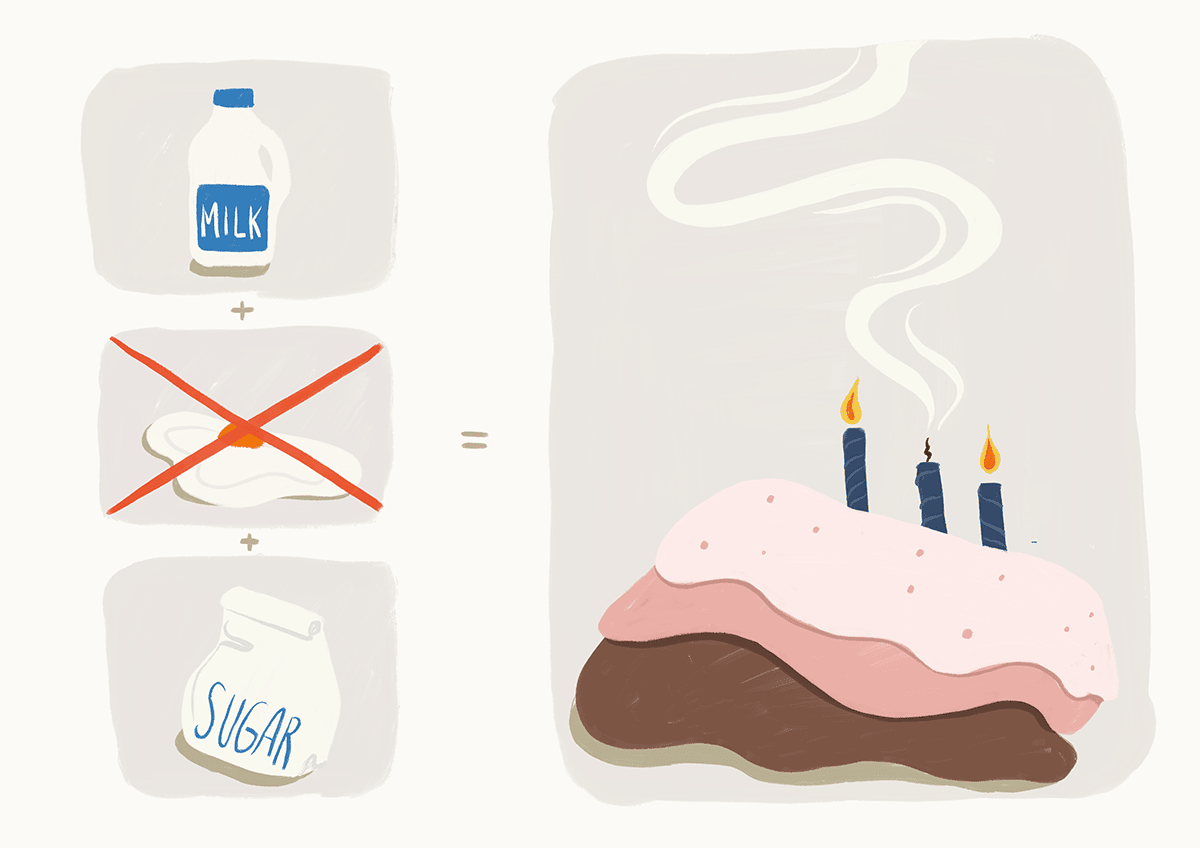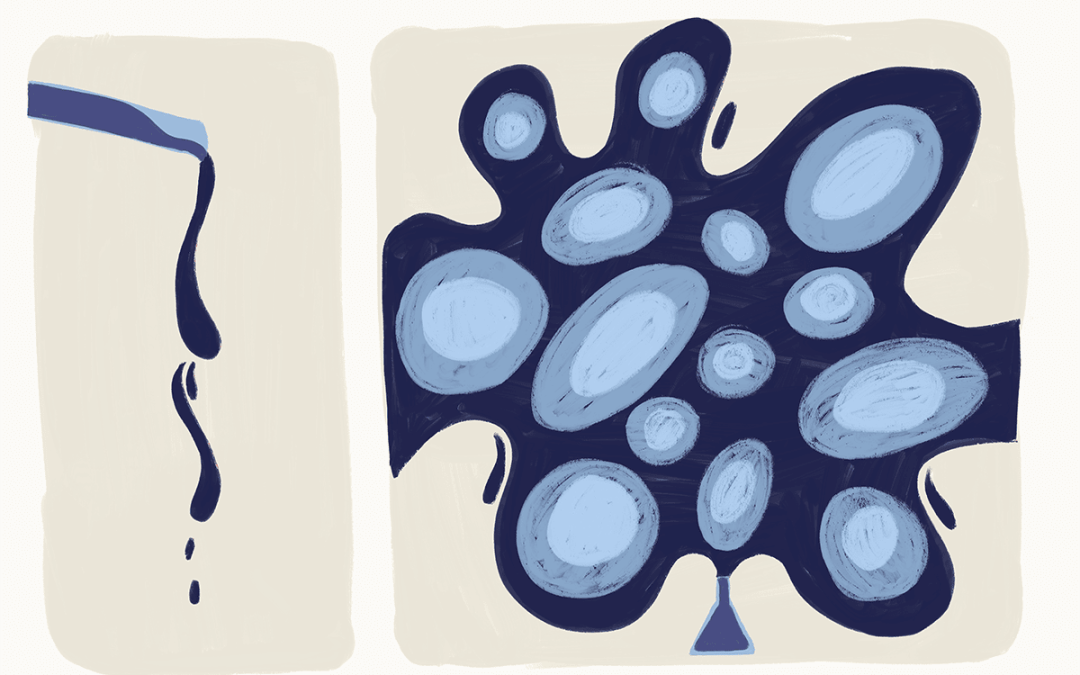3 July 2023
A collaboration between scientist Markus Luczak-Roesch and illustrator Jean Donaldson. Edited by Jonathan Burgess.
In 1975, a student working in Japan made a mistake. They misunderstood some instructions in Japanese and added 1,000 times more of a substance to a chemical reaction than they were supposed to.
The chemical reaction created a silvery plastic. When New Zealand-born scientist Alan MacDiarmid visited Japan and saw this silvery plastic, he recognised the potential of its remarkable properties. He worked on this new material alongside Hideki Shirakawa and Alan Heeger, and they created plastics that could conduct electricity.
MacDiarmid and his collaborators were awarded a Nobel Prize for this work, the third Nobel Prize ever awarded to a New Zealander. Conductive plastics now underpin most of our lives through their use in smartphone screens and solar panels.
What creates Nobel Prize winning ideas? Is it the right people being in the right place at the right time? Is it what these people say or do? Or do ideas just appear out of nowhere? Many people will say intuition, serendipity or coincidence may often be at play. Was it the way the instructions were given to the student that led to this fortunate mistake? Was it the student’s language barrier? Was it MacDiarmid’s ability to recognise the significance of this mistake? Or was it the unique composition of all of those things?
Amongst all the random occurrences in the world, do certain ones have a lasting impact? To try and answer this question, I have a suggestion to make: Everything is information.

Consider something as common and seemingly simple as MacDiarmid and his research team having a chat about an experiment they want to perform in the lab the next day. There are a lot of things going on:
- The words that are said
- Brain waves as sensory input is processed
- Body temperature
- Heart rate
- Frequency of eye moment
Over the course of the conversation all of these signals will continuously change. Some more or less than others. If we record them all we could get a very detailed landscape of information about their chat, and hopefully capture the coincidence that led to their groundbreaking discovery.
But studying what a human says over a time period is very different from studying their brain waves over the same period, for example. We’re dealing with apples and oranges to understand the full picture of this situation. The apples here being the words someone says, the oranges being the electrical activity in people’s brains.
We’re working on how we can map all these different signals to a specific type of mathematical object, namely a network. If we combine the many networks we construct from the different signals, we get something that you can think of as a cube. A cube of all the information from the whole variety of sources that were observed over a time period. Within this cube we can then search for structures that represent meaningful coincidences — because if these structures weren’t present the cube would fall apart or change shape.
This may sound rather complicated. So, let’s explore baking a cake. When baking a cake you combine all sorts of different ingredients that come in different forms like milk, sugar, and eggs. Mixed together and baked, the result is a tasty cake. But if you leave one of those ingredients out, you end up with a hot mess that won’t hold its shape. This roughly describes what we are dealing with here on a mathematical level.

We weren’t there to monitor MacDiarmid and his team having a chat before their discovery, but we do want to study human conversations in this way. We can also use this method to uncover patterns in complex data to better understand things like climate science, genomics, humanities, psychology and neuroscience.
Let’s connect what we just described to the present moment. You’re currently reading this blog post, which is — within the grand scheme of your lifetime — a tiny, statistically insignificant event. But at this very moment there may be something in your mind or your body’s response that may later trigger a thought. This could be minutes later, months later or even years later.
With our methods we want to make it possible to capture the holistic complexity of this moment and link it to related information in the past and in the future, to understand which indispensable ingredients are key in the baking of your life.
Do you think reading this was one of them?
Find out more about Transcendental Information Cascades
Markus Luczak-Roesch is a Principal Investigator with Te Pūnaha Matatini who brings unique computational approaches to collaborative teams to generate new insights into complexity and contribute to our understanding of emergence.
Jean Donaldson is a designer and native bird fanatic based in Te Whanganui-a-Tara. You can see more of her work at https://jeanmanudesign.com/.

